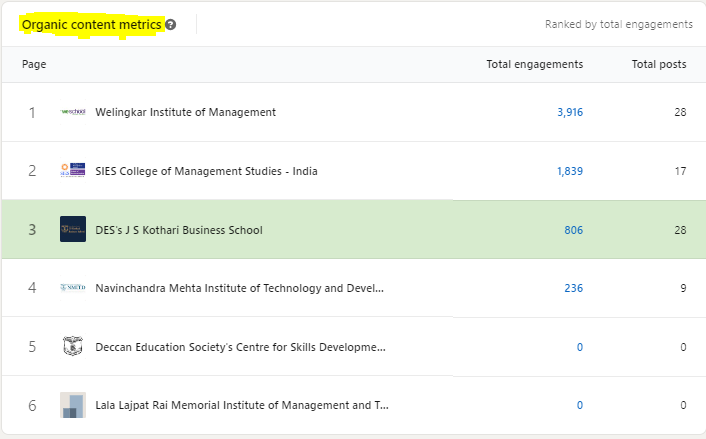Numbers versus Impact. Which metrics matter for a growing business?
Picture this: A bustling B School campus where budding talents are nurtured, and brilliant minds gather to script their success stories. Now, transpose this vibrant tapestry onto the digital realm of LinkedIn, where these institutions contest for attention to ultimate admission.
As the battle for visibility and influence rages on in this digital era, for the growing B School I work for- I find myself at a crossroads, pondering the ultimate question: “Follower metrics or organic content metrics – which weapon shall grant my institute the ultimate branding?”
So, I went to the data and let it debunk my mystery.
PS: Screenshots from the analytics account I handle.



As a growing content creator on LinkedIn, you should primarily focus more on organic content metrics rather than follower metrics. Here’s a concise comparison to answer all the whys:
Follower Metrics:
– Quantity-focused: Follower count indicates reach but doesn’t guarantee engagement.
– Provides an overall audience size estimation.
– Useful for understanding follower demographics.
Organic Content Metrics:
– Quality-focused: Measures the impact and engagement of your content.
– Reflects the resonance of your content with the audience.
– Helps expand your reach, attract new followers, and build a loyal community.
– Provides insights into audience preferences and interests.
– Drives long-term engagement and potential opportunities.
Conclusion:
As a growing content creator, your focus should be on organic content metrics. While follower metrics show your follower count, they don’t guarantee engagement or success. Organic content metrics, such as impressions, engagement rate, and click-through rate, give you insights into how your content is performing and resonating with your audience. By analyzing and improving these metrics, you can create valuable and engaging content that expands your reach, attracts new followers, and builds a dedicated community on LinkedIn.